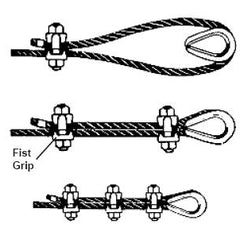
How to Stiffen a Wobbly Platform
No one likes a wobbly, shaky playhouse. Not only is it unnerving, it can be dangerous if too many people are on the platform at the same time. This phenomenon is also exacerbated when the posts holding up the platform are buried to shallow or aren't dug into the ground at all, but rather just sitting on top of the grade. Below we'll explore just exactly how your playhouse platform can be made nearly as solid as a rock.
Methods to Help Stiffen a Platform
There are several ways to remedy this problem. One is to have the offending posts dug into the ground and concrete poured about two through four feet below the grade, depending on where the frost line is in your area. For 4x4 posts that are less than 6' in height, this may be all you would need. For taller posts set in the ground, switching from a 4x4 to 6x6 can aid even more, though they are more cumbersome to work with.
Another option is to add pieces or sheets of plywood connecting the corners. Although this can work quite well in creating a stable play-set deck, it's usually quite unsightly, element prone and restricting.
By far the last thing you would want to do is simply add more posts. This only helps with greater vertical loads but does nothing to assist in the horizontal directions where all the swaying occurs.
Types of Cross Bracing
By far the easiest and less intrusive method to help lock up a platform is cross bracing, either with angled lumber, metal, PVC piping or cable. For typical exterior deck and playhouse construction, angled 2x lumber is easiest and most readily available. However with taller platforms, lumber can present itself as ugly and bulky, while also restricting underneath movement. That leaves us with cable cross bracing. Let's look at what hardware we'll need.
Hardware:
- Enough cable to make an end to end "X" between the two desired posts
- Two turn buckles
- Four eye bolts that'll pass all the way through the posts plus a little extra
- Four washers
- Four nuts
- Four thimbles that match the cable gage
- Twelve fist grips that match the cable gage
Tools
- Drill
- Drill bit that matches the eye bolt
- Angle grinder or cable snips
- Adjustable wrench

Installing the Cross Cabling
First, before any hardware gets install to the posts, two of the thimbles must be connected to two of the eye bolts. I find it easiest to use two wrenches or a vive and a wrench to open up the the thimbles so that they can be connected around the eye of the eye bolt.
A quick link can also be used to prevent the need to put the thimble over the eye bolt. If you go this route, make sure to get the next size up as the quick link will probably be the weakest link in the chain.
 Now that two of the thimbles have been attached, install all four eye bolts to the posts by drilling two holes, a few inches away from the bottom and top, in each. Slide in the eye bolts and install the washer and nuts. Both of the turn buckles should be about 90% extended and attached to two of the eye bolts. The other two thimbles should now be attached to the ends of the turn buckles.
Now that two of the thimbles have been attached, install all four eye bolts to the posts by drilling two holes, a few inches away from the bottom and top, in each. Slide in the eye bolts and install the washer and nuts. Both of the turn buckles should be about 90% extended and attached to two of the eye bolts. The other two thimbles should now be attached to the ends of the turn buckles.
 Now it's time to actually install the cable. Measure the distance between the end of the turn buckle and the eye bolt the cable would connect to. Add 10 inches to this measurement and cut that length. The cable will be held in place around the thimbles with three fist grips on each end. See the illustration on how to properly install these three fist grips. The cable should be slightly loose though this process so that it can actually be worked with. When both sides have been firmly secured, tighten up the turn buckle. You should now notice a significant improvement in your deck's stability.
Now it's time to actually install the cable. Measure the distance between the end of the turn buckle and the eye bolt the cable would connect to. Add 10 inches to this measurement and cut that length. The cable will be held in place around the thimbles with three fist grips on each end. See the illustration on how to properly install these three fist grips. The cable should be slightly loose though this process so that it can actually be worked with. When both sides have been firmly secured, tighten up the turn buckle. You should now notice a significant improvement in your deck's stability.
Depending on how high the posts are, if they are buried, how much weight is up top and just how much adverse movement you're willing to tolerate, this may need to be done on all the posts, and should be if you want the most solid platform experience.



